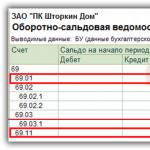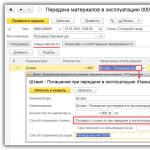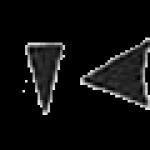General information
Account 76 shows calculations for:
- Personal and property insurance.
- Claims.
- Amounts that are withheld from employee salaries in favor of other persons or organizations based on executive documents, court decisions, etc.
Account 76: subaccounts
It can open articles on calculations for:
- personal/property insurance (76.1);
- claims (76.2);
- due dividends and other income (76.3);
- deposited amounts (76.4).
Insurance payments
Subaccount 76.1 reflects calculations for insurance of personnel and property. The exceptions are amounts of compulsory medical insurance and social payments. The calculation of contributions is reflected according to K-tu 76 in correspondence with the items of accounting for production (sales) expenses or other sources of insurance payments. Transfers of amounts in favor of organizations are made by debit. Account 76 in this case corresponds with the items recording funds. In D-th, losses due to insured events are written off. For example, they may be associated with damage and destruction of finished products, inventories, and other material assets.
The write-off is carried out from the register for accounting of fixed assets, etc. According to D-t, they also reflect the amount of insurance compensation that is due under the contract in correspondence from account 73. The latter records settlements with personnel for other transactions. The amounts of compensation that the organization receives from insurance companies under contracts are transferred to D-t (account 51 or account 52), as well as K-t (account 76). Uncompensated losses from insured events are written off from the loan items for settlements with different debtors/creditors on the account. 99. Analytical accounting of subaccount 76.1 is carried out for individual contracts and insurers.

Claims
They can be presented to transport and other organizations, suppliers, and contractors. Subaccount 76.2 also reflects the amounts for recognized/awarded penalties, fines and penalties. Settlements on claims are recorded on debit:
- To contractors, suppliers, transport and other companies regarding inconsistencies in tariffs and prices stipulated by contracts identified during the audit, if arithmetic errors are detected. Postings to account 76 in this case are made in correspondence with the account. 60 or with items on inventories, goods and related costs, if inflated prices and tariffs or errors were identified after making entries on inventories or expenses.
- To suppliers of goods, materials and processing organizations for identified inconsistencies in quality with technical specifications, standards, and orders. Calculations are reflected in correspondence with the account. 60.
- To suppliers, transport and other companies for identified shortages of cargo in excess of the amounts established by the contract. Amounts are also reflected in correspondence with the account. 60.
- For downtime and defects caused by contractors/suppliers. Reflection is carried out in amounts that were awarded by court decision or recognized by payers. Postings are made in correspondence with accounts for recording production costs.
- To credit companies for amounts written off/transferred by mistake. They are reflected in correspondence with accounts for accounting for loans and cash.
- For penalties, penalties, fines collected from contractors/suppliers, buyers/consumers, customers for violation of contractual obligations. Amounts are reflected in amounts recognized by the payer or awarded by the court. Recording is carried out in correspondence with the account. 91.

Account 76 is credited for the amounts of transferred payments with entries for cash flow items. Amounts that, as it turned out later, are not subject to recovery are, as a rule, credited to those accounts from which they were registered as debits. Analytical accounting is carried out for each claim and individual debtor.
Dividends and other income
On subaccount 76.3, among other things, takes into account calculations of losses, profits and other results under a simple partnership agreement. Amounts that are subject to distribution/receipt are reflected in the D account. 76 and K-tu account. 91. Assets that are received by the enterprise as profit are recorded according to the D account. 51 and others, as well as under K-tu articles on settlements with various creditors/debtors.
Amounts deposited
According to subaccount. 76.4 reflect settlements with employees of the enterprise for accrued but not paid funds (due to the non-appearance of recipients). The deposited amounts are recorded according to the K-tu article for settlements with creditors/debtors and the D-tu account. 70. When paying the specified funds, an entry is made according to the D account. 76 and K-tu accounts for accounting money.
Specifics
Account 76 separately records settlements with various debtors/creditors within a group of interrelated enterprises, for the activities of which consolidated reporting is generated. The new plan marks a significant expansion of the functions of this article. Of all the others, accounting account 76 is used most often. This is due to the fact that most of the calculations go through it. The number of records it contains prompted the plan's developers to open several subaccounts for it. Each of them must be intended for specific calculations.
VAT on prepayments and advances
They are reflected in accounting account 76.AB. This article is used to summarize information on the calculation of the amount of value added tax from payments made in advance. In analytical account 76.AB, entries are made for customers and buyers who have transferred payments for the upcoming shipment of products, goods, performance of work or provision of services. In addition, this article reflects the amounts on documents for receipt of advance payment. Each customer and buyer for whom entries are made to account 76.AB is an element of the “Counterparties” directory. The plan also provides for an article on VAT on advances issued and prepayments. Information on these amounts is reflected in account 76.VA.

Examples
Let's look at the accounting entries. Account 76, as mentioned above, reflects the amounts for settlements for personal/property insurance. Obligations are recorded by recording:
- Dt 26, 91.2, 44, etc.
- Kit 76.1.
Insurance payments reflect:
- Dt 76.1.
- Kit 51.
If an insured event occurs, the plan developers propose to write off the lost property at the expense of the insurers. But this action is true in cases where the latter recognize their obligations immediately after the occurrence of the event. As a rule, in reality this does not always happen. Often, the moment of recognition can last for a long period or the dispute can go into court. In this regard, before forced/voluntary consent to repay obligations by insurers, lost valuables are taken into account on the account. 94. Only after the organization has admitted responsibility can it be recorded:
- Dt sch. 76.1.
- K-t sch. 94.
If the insurer pays off the obligation partially or does not pay it off at all, the following entry is drawn up:
- Dt 99.
- Kit 94.
Receiving a refund should be done as follows:
- Dt 51.
- Kit 76.1.
As for payments for personal insurance of an employee at the expense of his salary, the accrual and fulfillment of obligations is recorded by recording:
- Dt sch. 70.
- K-t sch. 76.1.

For the amount of compensation due to the employee under the insurance contract, an entry is made:
- Dt sch. 76.1.
- K-t sch. 73.
From these examples it is clear that for personal or property insurance, account 76 is active-passive. The credit balance determines the enterprise's debt for insurance payments, the debit balance determines the insurance company's debt for compensation.
Clarifications on claims settlements
The plan developers propose to debit the subaccount. 76.2 from the moment of occurrence, in the opinion of the management of the enterprise, of a violation of contractual terms. But at the same time there is a need to reserve risk. In fact, if the administration of the enterprise believes that one of the employees, contractors, or suppliers is to blame for the damage caused to the company, and these persons acknowledge the claims and give a receipt that they are ready to compensate for the damage, then no problems will arise. In this case, the accountant will debit the subaccount. 76.2 and credit items of missing values, financial results, calculations, etc. Persons to whom the administration makes claims may completely or partially disagree with them. In this case, the accountant can choose one of the options:
- Debit subaccount. 76.2 and credit accounts for missing values.
- Make a record according to the D account. 94.
In postings to subaccounts. 76.2, as with any other accounts receivable account, it should be remembered that no one can be held liable without consent. If a corresponding entry is made immediately when a claim arises, a debt will arise. At the same time, there is no certainty that the debtor will agree with him. In this regard, the accountant, following the recommendations of the plan developers, needs to immediately create a reserve:
- D-t 91.2.
- Kit 63.

If this rule is ignored, then you can easily hide thefts, distortions, shortages, and embezzlement by creating fictitious property in the form of pseudo receivables. Its inevitable write-off will subsequently make it possible to hide real profits. The amount of the reserve formed must provide for a justified minimum amount of the claim, the receipt of which is beyond doubt. Nevertheless, it is more advisable to adhere to the rule that no one can be made a debtor without obtaining consent. Before the defendant recognizes the deficiency and before a court decision is made, the accountant should reflect the amount of the claim under D-that account. 94. After the debtor agrees to compensate for the damage, the following entry is made:
- Dt 76.2.
- Kit 94.
Important point
It should be remembered that a court decision confirming the indisputability of the debt does not mean that it will be repaid. The person against whom the claim is made may appeal the decision; he may not have the necessary funds, or by the time enforcement proceedings are initiated, he may officially cease his activities. Therefore, the use of account. 63 is still advisable. The amount of reserves, however, will be smaller in this case.
Revenue recognition
The main difficulties in practice are associated with this point. The developers of the instructions assumed that the repayment of the claim, and therefore the recognition of income itself, occurs upon payment. In this case, the compilers provide for the cash method instead of accrual, and give recommendations despite the assumption of certainty in time of the facts of economic activity and the logic of accounting according to PBU 1/98 (clause 6). Due to the fact that the rules are registered with the Ministry of Justice, but the plan is not, the rules of the PBU are more important. It follows from this that the accountant needs to make entries according to the following scheme:
- D-t 94, K-t 41 – fact of a shortage of 10 thousand rubles.
- D-t 76.2, K-t 91.1 – recognition of the culprit for the loss of 10,000 rubles.
- D-t 51, K-t 76.2 – return by the debtor of the damage caused in the amount of 10 thousand rubles.
- D-t 91.2, K-t 94 – write-off of identified loss of valuables 10,000 rubles.
If we assume that the damage will never be compensated, then a write-off is made:
- D-t 91.2, K-t 94.
The claim amount is reversed:
- D-t 76.2, K-t 91.1.
Here it should be said that compensation can be made not only in cash, but also in other valuables, if the management of the enterprise agrees with this.

Explanations on dividends and other income
In this case, account 76 becomes active. It is associated with profits from financial investments in third-party companies. Such enterprises should be understood only as organizations that have the rights of a legal entity or are bound under a simple partnership agreement. When these companies announce payments on invested funds, a notification is sent to the investor. In accordance with this notice, entries are made:
- D-t 76.3, K-t 91.1.
The payer will have the following entry:
- D-t 84, K-t 75.2.
It can be seen here that the planners clearly adhere to the assumption of certainty over time. Income is considered to be the will of the owners of the company in which finances were invested, and not the actual receipt of profit in the form of money, etc. The fact of enrollment is recorded as follows:
- D-t 51, K-t 76.3.
The payer has the following wiring:
- D-t 75.2, K-t 51.
For the payer, the fact of accrual of payment will not be considered as an expense. This is recognition of the rights of the investor (founder, as a rule) to a part of the profit.
All financial transactions are reflected in accounting accounts. This publication will discuss what account 76 “Settlements with various creditors and debtors” is intended for, and what categories it is divided into. The article will provide examples to help you better understand the topic at hand.
Purpose of account 76
76 account is an active-passive settlement account. It is necessary in order to summarize information on financial transactions with debtors and creditors that is not included in:
- claims;
- funds withheld from employees' salaries for third parties in accordance with court decisions or executive acts.
In the new chart of accounts, the functions of the account in question, through which the main financial flow is carried out, have significantly expanded. In this regard, it became advisable to open different categories intended for certain types of calculations.
Account 76: subaccounts 1 and 2
Since monetary transactions can be different, accounts payable and accounts receivable are usually divided into several categories. The first (76.1) includes insurance of property and personnel, with the exception of payments for medical and social insurance.
Transfers of funds to an organization are reflected in a debit, and write-offs are reflected in a credit. For example, D76 K73 - insurance compensation due to an employee of the organization according to the contract. D51 K76 - receipt of funds by the organization in accordance with regulations. D99 K76 - write-off of uncompensated insurance claims or damage from a force majeure event.
Subaccount 76.2 reflects calculations for claims that may be presented:
- to suppliers, transport agencies and contractors regarding price discrepancies found, when computational errors are identified after accounting completion, as well as when there is a shortage of cargo (D76 K60);
- to organizations for violation of quality standards, non-compliance with specifications (D76 K60);
- to credit institutions for erroneously written off or transferred amounts on the organization’s accounts;
- for downtime or defects arising from suppliers, contractors (correspondence with Section III of the chart of accounts);
- on fines and penalties for non-compliance with obligations in the contract (correspondence with account 91).
The credit of subaccount 76.2 reflects received payments. If it turns out that the funds are not recoverable, they are treated as a debit.

Account 76: subaccounts 3 and 4
Clause 76.3 controls dividends and other types of income due to the company that do not contradict the partnership agreement. D76 K91 - profit to be received (distributed). D51 K76 - funds received by the organization from debtors.
The fourth subaccount is designed to take into account amounts accrued to employees of the enterprise, but not paid within a certain period due to the non-appearance of recipients. In such cases, the following wiring is performed: D70 K76. When a worker receives money, an entry is made to the debit of account 76.

Application of subaccount 76/3 in practice
The company Oasis LLC has accounts receivable in the amount of RUB 1,350,000. on account 62 “Settlements with customers and buyers”. For certain reasons, before the payment deadline, she transferred for 750,000 rubles. their rights to the company Iceberg LLC, which was able to recover 900,000 rubles against the debt due. In such a situation, several questions arise:
- Are accounts receivable a purchase of property or a financial investment in assets?
- The buyer's asset is RUB 1,350,000. or 750,000 rubles?
- In this case, is the debt of debtors considered income, and 750,000 rubles. - expense of the enterprise Iceberg LLC?
In such a situation, Oasis LLC must make, from a legal point of view, the following transactions:
Debit 91.2 Credit 62 1,350,000 rub. - writing off the right of claim from buyers.
Debit 51 Credit 91.1 RUB 750,000 - compensation received.
Such operations make it possible to record in the “Other income and expenses” accounts the loss of the Oasis enterprise that arose from the assignment of the right of claim. Accountants of the Iceberg company must make a debit entry to account 76.3 to record the debt from counterparties. The difference between the rights received and the costs for them is shown in the credit of accounts 98/1, 83 or 90/1.
Even partial collection of payment leads to mutual agreement of both parties and full repayment of debts. The unpaid portion is reflected in debit and the written-off portion is reflected in 98.1. In the example under consideration it turns out:
Debit RUB 51,900,000.
Debit 98.1 765,000 rub.
Account credit 76 1,350,000 rub.
The Iceberg company spent 750,000 rubles. for the acquisition of rights and returned 900,000 rubles, that is, the profit is 150,000 rubles. The wiring is like this:
Debit 98.1 Credit 91.1 RUB 150,000
The actual amount of profit from the operation is reflected in account 98/1, intended for recording income for future periods.

Subaccount 76.AV “Value added tax on advances and payments”
Account 76.AB allows you to summarize information on calculations for paying VAT from advance payments. Accounting is maintained with those customers and buyers from whom money has been received in advance for the planned shipment of goods or for the provision of various types of services.
Business transactions may be different. For example: D68.02 K76.AV - accounting for value added tax on payment received from the client in advance. D 76.AV K68.02 - VAT accrual on funds received in advance from customers. Account 76. AB has the following sub-accounts (analytical characteristics): “Counterparties”, “Invoices”.

Debit correspondence
The account in question (76) by debit can correspond with the following: “Fixed assets” (01), “Equipment for installation” (07), “Income-generating investments in MC” (03), “Investments in non-current assets” (08), “ Intangible assets" (04). From the second section of the chart of accounts, it interacts with the items “Materials” (10), “Animals for growing and fattening” (11), “Procurement and acquisition of MC”.

Account 76 can correspond by debit with all items in the “Production Costs” section, as well as with 41, 45 and 43, in the “Finished Products and Goods” category. Postings are often made with cash accounts: 52, 50, 58, 51, 55, as well as with settlement accounts: 60, 67, 66, 62, 73, 70, 76, 71, 79. In addition, correspondence is carried out on debit with the following ( reflects profits and losses), 91 (records various income and expenses), 90 “Sales”, 97 “Deferred expenses”, 86 “Targeted financing”.
Examples (by debit)
Some examples from the table will help you understand the material presented in the article.
Correspondence | |
The cost of unfinished main production decreased due to debtors and creditors. This may be an accrual of debt to the insurance company due to an event (emergency or force majeure). |
|
Losses from defects are charged to the account for settlements with creditors and debtors. |
|
Receipt of debts to suppliers, according to documents confirming consent to the transfer of funds. |
|
Payment of funds to creditors in cash (from the cash register). |
|
D76 K68-VAT | Identification of budget debt (for VAT) during the determination of revenue for taxation. |
General business expenses are compensated through various debtors and creditors. |
|
Accounting for debts from various debtors for finished products. |
|
The cost of work in progress servicing production decreased due to the transfer of funds to the organization from debtors. |
Loan correspondence
Account 76 can interact with the following categories of the chart of accounts: “Investments in non-current assets”, “Fixed assets”, “Intangible assets”, “Equipment for installation”, “Income investments in MC”. In the “Production Inventories” section, correspondence is carried out with the accounts “Materials”, “Procurement and acquisition of medical supplies”, “Animals for growing and fattening”, “VAT on purchased values”.
Account 76 can also interact on credit with all settlement accounts (except 68, 69, 75, 77) and the “Production Costs” category. From the section “Finished products and goods” - with accounts 52, 50, 51, 44.55, 41, 57, 45, and 58. In addition, correspondence is carried out with most current accounts and, of course, with those that reflect monetary transactions (91, 97, 94, 96, 99).

Examples of business transactions (loans)
The table below with several examples will help you visually familiarize yourself with what account 76 transactions have.
Correspondence | |
Write-off of purchased fixed assets (fixed assets) in the section on accounts payable. |
|
Return of leased property to (occurs in cases where there has been no change of owner based on the agreement). |
|
Write-off of materials regarding accounts payable. |
|
Receiving funds from the client to the current account. |
|
Receipt of debt from buyers based on an agreement. |
|
Debt to various creditors and debtors for general production costs. |
|
Fixing current accounts payable to the lessor (for lease payments) to reduce long-term liabilities. |
Account balance 76
Novice accountants often ask the question of what account 76 actually is: active or passive? In practice, situations are different, but since it takes into account receivables and payables, the balance can be of two types:
- one-way (debit or credit);
- two-way (simultaneously debit and credit).
This means that the account in question is active-passive. In order to determine the debit balance, all debts from counterparties are summed up. Balance 76 of the loan account reflects all the money that the company is obliged to pay.

Reports on accounts payable and receivable in the 1 C system
A company using the 1C: Enterprise 8 system must maintain a report on the amount of receivables from counterparties. You can get acquainted with the information if, after starting the program, you enter the “Counterparties” section. In the field that opens there is a list of organizations and individual entrepreneurs. Among them there are debtors and creditors. Contact details, invoices and contracts, work schedules - all this can always be viewed. It is from this menu that you can register a new organization that is part of the holding.
Finding out the exact debt of enterprises is not difficult. To do this, go to the “Debt under contracts” section, in the “Output debt” panel, select “Receivable” and set the required date. The user will see a list of all counterparties, from which you can select specific enterprises (with large debts). If there are many organizations and the entire list does not fit on one page, the information can be presented in a visual form. To do this, you will need to go to the “Diagram” section. Work with accounts payable is carried out in a similar way.

That's all you need to know about account 76, which reflects settlement transactions with debtors (creditors). Since the legislation of the Russian Federation is systematically changing, you should regularly use legal reference systems, which always have an up-to-date chart of accounts and PBUs. Then specialists will always be aware of any changes affecting their professional activities and will be able to make the right decisions when maintaining accounting records.
Synonyms for account are: score 76.AB, score 76-AB, score 76/AB, score 76 AB, score 76@AB
Account characteristics/description:
Subaccount 76.AV "VAT on advances and prepayments" is intended to summarize information on calculations of value added tax amounts from advance payments.
Analytical accounting is maintained for buyers and customers from whom advance payment has been received for the upcoming shipment of goods, products, performance of work and provision of services (sub-account “Counterparties”) and documents for receipt of advance payment (sub-account “Invoices issued”). Each buyer and customer is an element of the “Counterparties” directory.
Description of the parent account: Description of account 76 "Settlements with various debtors and creditors"
Business operations:
"Deduction of VAT on advance payment previously received from the buyer (advance payment)"
What document is used in 1s:Accounting 2.0 /1s:Accounting 3.0:
- Generating purchase ledger entries in the menu "Purchase - Maintaining a purchase book"
"Entering initial balances: VAT on advances and prepayments received from buyers and customers"
What document is used in
“Settlements with various debtors and creditors” - 76 accounting account. This is an active-passive account that involves the formation of a credit or debit balance at the end of the month. The debit turnover of account 76 reflects the presence of receivables, and the credit turnover reflects accounts payable. An active-passive account allows you to analyze both the organization’s sources of funds and its own assets.
general characteristics
Depending on the type of settlements, the corresponding subaccounts 76 of the accounting account for a separate type of operation are opened. Each of them is intended for grouping and further analysis of the economic processes of the enterprise in monetary terms. Among the accounts for certain types of obligations and settlements with debtors, you can find categories for accounting for unpaid wages for various reasons, insurance of property of the organization and employees, receivables from employees for the use of housing and communal services and other transactions not mentioned in accounts 60-75.
Main subaccounts of account 76
The accounting policy regulates the use of the following subaccounts of type 76.00:
- 76.01 - for accounting for settlements based on court documents;
- 76.02 - for accounting for amounts not received by employees for labor;
- 76.03 - for accounting for settlements with debtors for housing and communal services;
- 76.04 - for accounting for trade union dues and payments;
- 76.05 and 76.06 - for accounting for settlements with subsidiaries and dependent organizations, respectively;
- 76.07 - for calculations for payment of income;
- 76.08 - for settlements with individuals who do not work in the organization;
- 76.09 - for settlements on received and submitted claims;
- 76.10 - for settlements on insurance matters;
- 76.11 - to account for targeted fees for housing and communal services;
- 76.12 - for accounting for undetected amounts;
- 76.13 - for settlements with the state. organs;
- 76.80 - for other settlements with debtors and creditors.

Additionally, accounting account 76 is opened “VAT on advances and prepayments” and accounting account 76 “VAT on advances and prepayments issued”, which correspond to account 68. The use of VAT accounts is mandatory and important for all companies - tax payers.
Subaccount 76.01
In settlements based on enforcement documents, it is implied the withholding of funds from the amounts of remuneration for the labor of employees for the account of individuals and legal entities, based on court decisions and documents. Let's consider possible types of correspondence of subaccount 76.01 with other accounts:
Subaccount 76.01 is debited with accounts 50 or 51 when the company makes the payment of the amounts required by executive documents. After the expiration of the limitation period for the documents, the debt amount is written off to the enterprise’s income and debited from 91.01 “Other income and expenses.”

The first entry in accounting for such a situation will be the correspondence of accounts 70 and 76.01, which reflects the process of withholding the amount payable. Subaccount 76.01 is credited with accounts 50, 51, 55 in the event that the organization returns amounts under executive documents.
Subaccount 76.02
Account 76.02 in accounting is used for deposited wages that were not received on time by the company's employees for various reasons.
The amount not received for wages is debited from account 70.04 and reflected in credit 76.02. Funds can be issued to the employee, which is described by posting Dt 76.02/Kt 50. If the statute of limitations expires, the amount of the deposited salary is written off to the income of the enterprise.
Subaccount 76.03
The account “Settlements with tenants for housing and utilities” is intended to record payments by tenants for the use of premises and utilities. Amounts payable are reflected in account 90 “Sales” (sub-account “Revenue”).

Citizens who are entitled to government benefits may be transferred amounts of compensation for payment of housing and communal services. Budget funds are accounted for in account 86.01. Receipt of payment for the use of housing and communal services of the organization from employees is reflected in the credit of account 76.03 and in the debit of account 70. In the case when payment for housing is made through subsidies provided by the organization, subaccount 73.80 is used.
Settlements with trade unions
Accounting for contributions by members of the trade union organization and the use of accumulated funds is carried out in account 76.04 “Settlements with trade union organizations”. Contributions are withheld from the amounts of remuneration for the labor of the enterprise's employees at the established rate and are displayed in the debit of account 70.01, then transferred to the organization's bank account. The process of transferring funds can be described by posting Dt 76.04/Kt 51.
Payment of amounts received from trade union organizations is made using accounts 50, 51, 55 and settlements with employees. The accounting entries for such an operation look like this: Dt 76.04 / Kt 70.01 or Dt 76.04 / Kt 50. When paying for vouchers to an employee of an organization from the funds of trade union contributions, account 76.04 corresponds with account 73.
Settlements with subsidiaries and dependent organizations
Account 76.05 in accounting is used for settlement transactions with subsidiaries. Subaccount 76.06 is similar to it, which describes making payments with dependent companies. Correspondence can be compiled using accounts: 50, 51, 55, 78 and its subaccounts.
Dividend calculation
To record settlements with individuals and legal entities regarding income, accounting account 76 is used. This is subaccount 76.07 “Calculations for due dividends and other income.” The funds that need to be paid are reflected in the debit of subaccount 76.07 and in the credit 91.01.

Intangible assets transferred to the organization as income are listed in the debit of asset accounting accounts and credit 76.07. Patents, copyrights, brands, and licenses for the production of a certain type of product can be transferred as intangible assets.
Payments to individuals
Subaccount 76.08 is intended for conducting transactions between the organization and former employees. For example, to issue a voucher to a pensioner, the following entries are made: Dt 76.08/ Kt 60-01, Dt 76.08/ Kt 90.01, Dt 76.08/ Kt 91.01. If part of the funds allocated to pay for the trip is transferred to the Federal Social Insurance Fund of the Russian Federation, then account 69.01 is used. The amount transferred by the fund is shown in debit 69.01. In cases where the organization takes on part of the payment for the trip, the following correspondence is generated: Dt 91.02 / Kt 76.08.
Subaccount 76.08 is also used to calculate income tax for an individual who is not a current employee of the organization. The operation is carried out if the value of the gift due exceeds the established value. Account 76.08 corresponds with 68.02.
Claims and insurance settlements
76.09 an accounting account was created to reflect settlements of claims made against suppliers and contractors and fines awarded. Cash requirements are reflected in the debit of account 76.09. Only those claims that are made on the basis of a concluded agreement between the companies are considered justified.

In this case, the following accounts are credited: 60, 20, 50, 51, 55 and a group of accounts payable for loans. Bills not paid on time lead to the accrual of interest, which is charged to account 91.01. Posting Dt 79.02 / Kt 76.09 or Dt 51 / Kt 76.09 describes the process of receiving funds in favor of the enterprise.
Subaccount 76.10 reflects transactions for the calculation of insurance of property and employees of the organization. This does not include Social Security and Medicare payments.
Characteristics of subaccounts 76.11, 76.12, 76.13, 76.5
Account 76.11 “Calculations for target fees for housing and communal services” is used to calculate payments for the use of utility services.
Account 76.12 “Settlements for unclear amounts” is used to carry out operations in cases where it is not possible to find documents for transferring amounts to the appropriate accounts. If the recipients of funds for debts are not identified, the amounts are written off from account 76.12 in favor of the organization.
Account 76.13 “Settlements with government agencies” is used to carry out operations to pay fines and debts to the state administration.
In the course of a company's activities in the production and sale of products or services, account 76 is widely used in accounting.
| Dt | CT | Characteristics of an accounting transaction |
| 76.03 | 76.11 | accrued amount of payments for utilities |
| 76.11 | 51 or 55 | funds were transferred to utility service providers |
| 51 or 55 | 76.12 | Unidentified amounts were credited to the current account/special bank account |
| 76.12 | 91.01 | writing off outstanding debts to the organization's income |
| 91.02 | 76.13 | a fine was imposed on the company |
| 76.13 | 51, 50 or 79.02 | the amount of the fine is transferred to the relevant government agency |
| 97.03 | 76.13 | expenses for issuing a license are reflected |
| 76.13 | 51 | the debt for the issued license has been repaid from the bank account |
Account 76.5 in accounting is used for settlements with other suppliers and contractors. Do not forget that the main account for settlements with suppliers is 60, a subaccount 76.5 exists to pay for additional services not included in it. Here the amounts of the cost of packaging, the work of transport companies, and VAT for importing products can be recorded.
Deduction of VAT on advances received
Accounting account 76 is not only settlements with debtors and creditors, but also payment of VAT for advance payments. Advance is the amount received by the supplier before the goods are shipped. Upon receipt of an advance payment, the taxpayer is obliged to transfer the amount of VAT to the budget.

76-av accounting account is used to calculate VAT on advances received. Within 5 days, the supplier issues an invoice, one copy of which is sent to the buyer. VAT can be paid only after the sale of goods, then a 76-account is opened. The entries for calculating VAT on the advance received are as follows: Dt 51/ Kt 62, Dt 76-av/ Kt 68. When terminating the contract and returning the advance to the buyer, the manufacturer may require a deduction of the VAT amount. In this case, the reverse operation occurs: Dt 68/ Kt 76-av.
VAT on listed advances
Accounting account 76 is used to calculate VAT on the listed advances. After receiving the goods, the organization debits account 76 with account 68, after which the invoice is reflected in the purchase book.
If the company paying the advance to the manufacturer is a VAT payer, it can deduct VAT. The buyer has such a right only after receiving an invoice for the products sold and meeting the following conditions:
- the supplier has issued a VAT invoice;
- the advance was paid for the upcoming supply or provision of services;
- there is documentary evidence of payment;
- an invoice has been issued for the advance payment;
- an agreement on the use of the advance was signed.
Compliance with all points guarantees the buyer the opportunity to deduct VAT and reduce the total amount of tax payable to the budget.
What's the result?
Accounting account 76 is one of the important areas of settlement in an enterprise. It is important to correctly understand the essence of business transactions and attribute them to the appropriate accounts. Competent preparation of transactions and knowledge of the purpose of each type of account will help minimize errors in the organization’s accounting registers. To make it easier to understand correspondence, use the standard chart of accounts of the Russian Federation.
VAT on advances received and advances issued is one of the tools for regulating an organization’s expenses for tax payments. To account for VAT on advances, subaccounts 76 of account are used: 76.VA - for received, 76.AB - for issued.
An organization that has paid an advance to a supplier has the right to claim for deduction the VAT paid. Necessary conditions for obtaining a VAT deduction from an advance payment:
- the condition for advance payment must be clearly stated in the contract with the supplier;
- the advance payment must be presented to the SF (no later than 5 days after payment).
VAT deduction is provided in the tax period when the advance was transferred. When the final payment for the delivery occurs, that is, the goods are received from the supplier under the acceptance certificate, the organization is obliged to restore the amount of VAT previously claimed for deduction.
In addition to the receipt of goods, the obligation to restore the deduction arises for the organization in the following cases:
- changes in the terms of the contract;
- termination of the contract and return of the advance.
VAT is restored in the same amount in which it was previously accepted for offset. If the terms of the contract determine that the delivery of goods occurs after receiving 100% advance payment, the buyer can transfer the advance in installments. In this case, the amount of VAT reflected in the SF for the supply is restored. In any case, this value coincides with the amount of VAT on all advance tax payments for this supply.
VAT on advances received
When selling products (goods, services) to the buyer, a mandatory condition may be specified in the contract - advance payment in the amount of up to 100%.
On the received advance, the organization issues a tax return and charges VAT at a rate of 18/118%. The amount of this advance is included in the sales book as accrued VAT, that is, a tax that the organization is obliged to pay to the budget.
Get 267 video lessons on 1C for free:
In practice, after issuing a SF for the advance received, 3 situations are possible:
- during the advance period the sale occurred;
- no sales occurred during the advance period;
- return of advance payment to the buyer (termination of contract, change of conditions, etc.).
In the first case, after the shipment has been made, the selling organization has the right to present previously paid VAT on the advance received for deduction. That is, the advance SF is closed with a purchase ledger entry.
In the second case, the amount of the advance and the VAT accrued on it is reflected in the VAT return for the current period in line 070 of Section 3.
In the case of an advance refund, it is also possible to claim the VAT paid for deduction, that is, an entry is created in the purchase book. You can use the deduction within a year after termination of the contract.
In the event of liquidation of the purchasing organization before full fulfillment of the delivery conditions, if it is impossible to return the advance payment, VAT accrued upon receipt of the advance payment is not subject to deduction.
Examples of entries for accounting for VAT on advances
Example of an operation for advances received
Harmony LLC, under an agreement with the buyer Amalgama LLC, must supply a consignment of goods in the amount of 212,400 rubles, incl. VAT — 32,400 rub. 07/10/2016 "Amalgam" transfers an advance payment of 50% of the contract amount: 106,200 rubles. VAT on advance: 106,200 * 18/118 = 16,200 rub.
We reflect in the postings VAT on advances received from the buyer:
In August, Harmony ships a consignment of goods to Amalgam. Sales transactions and deduction of VAT from advances received:
Transactions on advances issued
Let's consider the same operation from the buyer's side. The accountant of Amalgama LLC will reflect VAT on advances issued by postings:
Upon receipt of the goods, the deduction of VAT on the delivery is reflected.

















